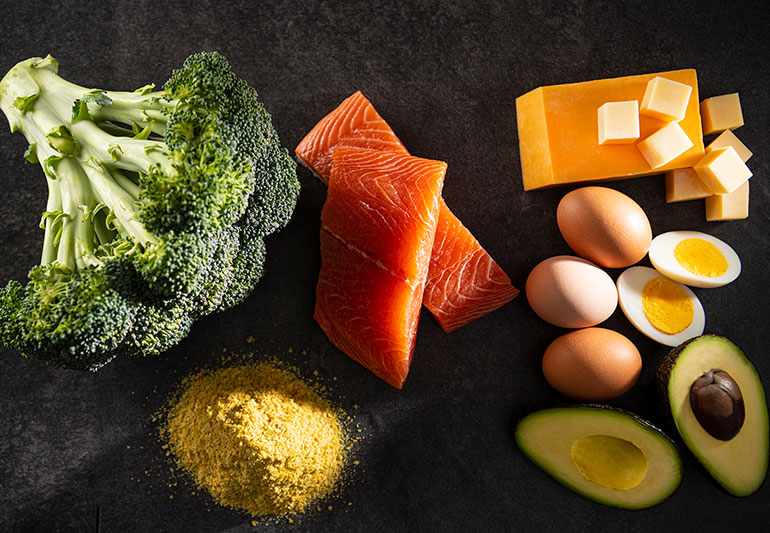
Vegan studies is a branch of studies that explores veganism as an identity and ideology. It studies veganism within the media, social sciences and humanities. It also examines the environmental and ethical impacts of veganism. Its primary goals are to learn about the advantages and drawbacks to veganism, and to promote its positive effects on society.
Vegan diets pose ethical and ecological concerns
Vegan diets are frequently regarded as more environmentally friendly. However, there isn't much information available about their true impact. In fact, the ecological footprint of a vegan diet may be more significant than that of an omnivore, especially if a vegan consumes large amounts of soya and imported fruit. A team of researchers recently examined 151 adults from Italy and found significant inter-individual variability in each diet's ecological footprint. This makes it difficult for us to determine the ecological impact of veganism.
Vegan diets have the potential to reduce global acidification and eutrophication as well as reducing land use for livestock farming. Poore and Nemecek (2018) claim that a vegan diet can reduce these impacts. Veganism also has ethical and moral concerns, such as animal cruelty.

Vegetarian diets can have health effects
Veganism has many benefits for the body. It increases blood flow, decreases blood viscosity, lowers heart rate, and improves blood circulation. It lowers inflammation. These factors make a vegan diet an excellent choice for recreational athletes. However, the benefits of vegan diets are not limited to athletes.
Endurance athletes may also benefit from vegan diets. The vegan diet has been reported to make athletes extremely healthy. It is compatible with endurance running. Step 2 found that vegan and vegetarian endurance runners had a higher quality of life.
Support for vegan diets in RCTs
Weak evidence supports vegan diets. Additional prospective studies are required to back these claims. It is also important to make sure that vegan diets are defined properly to ensure that they do not contain any animal-based products. You should also identify the specific group to be included in these studies. It could be patients, general population, or specific life stages. It is important to conduct long-term studies that compare the impact of vegan diet on a range os outcomes.
In general, vegan diets have been associated with a lower risk of mortality and diabetes. However, meta-analyses comparing the diet to a standard diet had imprecise estimates and included only cross-sectional and prospective studies. It was not associated with an increased chance of developing certain types of cancer. Further, studies investigating the effect of vegan diets on neurodegenerative diseases were limited.

Problems with inadequate vegan diets
Vegan diets can be very nutritious, but if they are not planned well, they can lead to many problems. Micronutrient deficiencies can result from a vegan diet that doesn't include enough vegetables. These deficiencies can include zinc, iron, and calcium. Vegans could also be lacking essential vitamins, such as n-3 fat acids.
For children, the problem of getting enough protein from a vegan diet can prove difficult. A lack of sufficient protein can lead to a variety of issues, including decreased energy and reduced exercise tolerance. Vegans will need to consume protein powders, or increase the intake of complex carbohydrate.
FAQ
What are the 10 best foods to eat?
The following are the 10 best foods to consume:
-
Avocados
-
Berries
-
Broccoli
-
Cauliflower
-
Eggs
-
Fish
-
Grains
-
Nuts
-
Oats
-
Salmon
What is the best way to live a healthy lifestyle?
Living a healthy lifestyle is one that encourages you to eat well, exercise regularly, get enough sleep, and avoids stress. You will live a long and happy life if you adhere to these guidelines.
You can start by making small changes in your diet and exercise routine. You can lose weight by walking 30 minutes each day if you are looking to lose weight. If you're looking for a way to increase your activity, consider taking up swimming or dancing. An online fitness program, such as Strava and Fitbit, can help you track your activity.
How can I control my blood pressure?
The first thing you need to do is find out what causes high blood pressure. Then you need to take steps to reduce this cause. This could include eating less salt, losing weight if necessary, taking medication, etc.
Also, make sure to get enough exercise. You can also walk if you don’t have the time.
You should join a gym if you are unhappy with your exercise routine. A gym that has other members who share your goals will be a good place to start. It is much easier to stick with a exercise program if there are others who will be watching you at the club.
How can I live the best life possible every day?
Finding out what makes your heart happy is the first step to living a fulfilled life. You can then work backwards once you have identified your happiness. You can also talk to others about how they live their best days every day.
You can also read books like "How to Live Your Best Life" by Dr. Wayne Dyer. He talks about finding happiness and fulfillment in all aspects of our lives.
Statistics
- In both adults and children, the intake of free sugars should be reduced to less than 10% of total energy intake. (who.int)
- WHO recommends reducing saturated fats to less than 10% of total energy intake; reducing trans-fats to less than 1% of total energy intake; and replacing both saturated fats and trans-fats to unsaturated fats. (who.int)
- The Dietary Guidelines for Americans recommend keeping added sugar intake below 10% of your daily calorie intake, while the World Health Organization recommends slashing added sugars to 5% or less of your daily calories for optimal health (59Trusted (healthline.com)
- Extra virgin olive oil may benefit heart health, as people who consume it have a lower risk for dying from heart attacks and strokes according to some evidence (57Trusted Source (healthline.com)
External Links
How To
What does the word "vitamin" mean?
Vitamins are organic compounds naturally found in food. Vitamins aid us in absorbing nutrients from the food we eat. Vitamins cannot be produced by the body. They must be obtained from food.
Two types of vitamins exist: water soluble and oil soluble. Water soluble vitamins dissolve easily in water. Examples include vitamin C,B1 (thiamine), B2 (riboflavin), B3 (niacin), B6 (pyridoxine), folic acid, biotin, pantothenic acid, and choline. Fat-soluble vitamins are stored within the liver and in fatty tissue. Vitamin D, E, K and A are some examples.
Vitamins can be classified according to biological activity. There are eight main types of vitamins:
-
A - Essential for healthy growth and health maintenance.
-
C – essential for proper nerve function.
-
D - essential for healthy teeth and bones.
-
E - required for good vision & reproduction.
-
K - Required for healthy nerves and muscles.
-
P - vital for building strong bones andteeth.
-
Q - aids digestion, absorption and absorption iron
-
R - Required for red blood cell production
The recommended daily allowance (RDA) of vitamins varies depending on age, gender, and physical condition. RDA values are set by the U.S. Food and Drug Administration (FDA).
For example, the RDA for vitamin A is 400 micrograms per dayfor adults 19 years or older. Pregnant mothers need 600 micrograms a day to ensure fetal growth. Children ages 1-8 require 900 micrograms per day. Infants below one year of age need 700 micrograms daily. But, between 9 months to 12 months of age, the amount drops to 500micrograms per days.
Children aged between 1-18 years old who are obese require 800 micrograms per Day, while overweight children need 1000 micrograms every day. Children underweight or obese will require 1200 micrograms a day to meet their nutritional requirements.
Children 4-8 years old with anemia will need 2200 mg of vitamin D daily.
2000 micrograms are required daily for good health in adults over 50. Due to their increased nutrient needs, pregnant and breastfeeding women need 3000 micrograms daily.
1500 micrograms is the recommended daily intake for adults aged 70+, as they lose 10% of their muscle every ten years.
Women who have been pregnant or are lactating require more than the RDA. Pregnant women require 4000 micrograms daily during pregnancy, and 2500 micrograms every day after birth. Breastfeeding mothers need to consume 5000 micrograms each day when breastmilk has been produced.